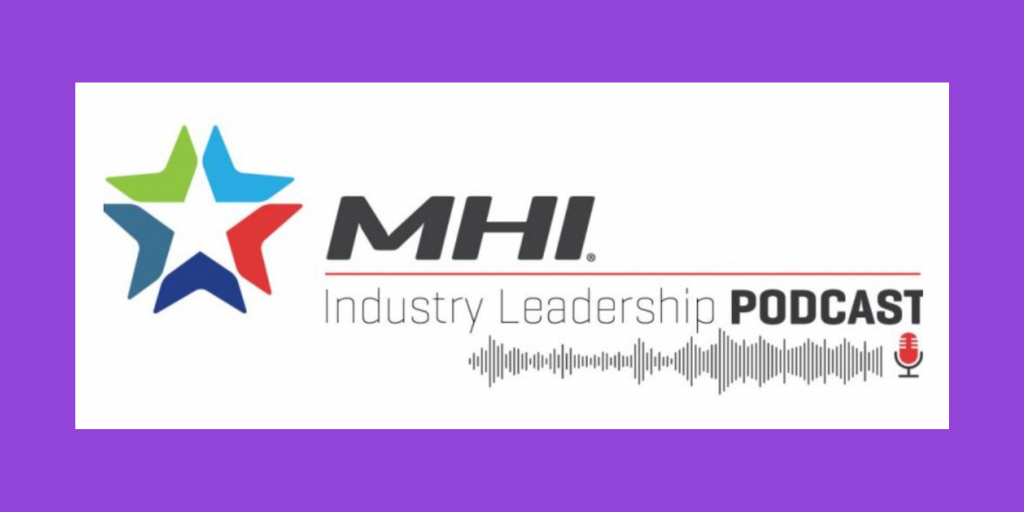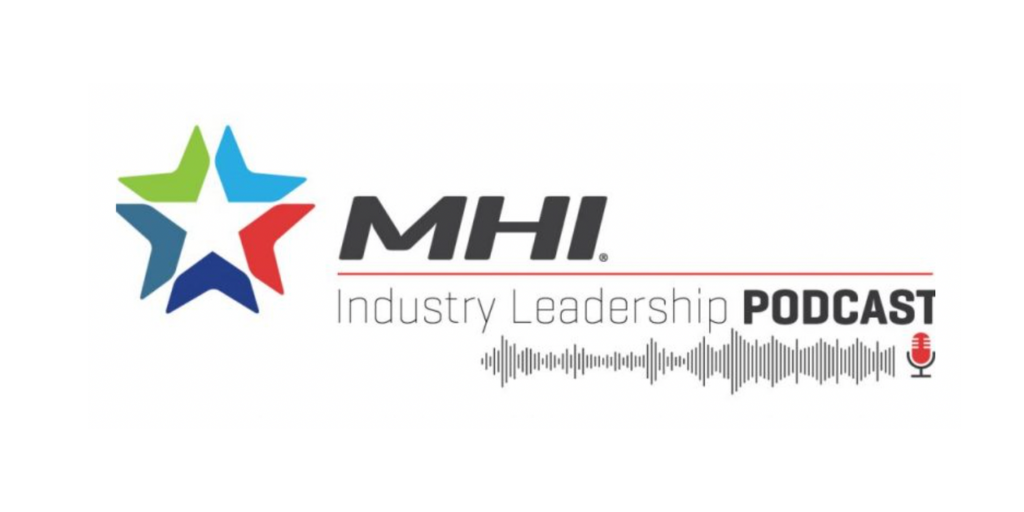4 min read
Takeaways from MHI’s “End-To-End Supply Chain Visibility” Podcast
 Flora Collins
:
September 11, 2023
Flora Collins
:
September 11, 2023

In a recent episode of the MHI cast, a podcast dedicated to unraveling the intricacies of supply chain management, several industry experts, Bill Wappler CEO of Surgere, Padhu Raman, Co-founder and CPO of Osa Commerce, John Dwinell, Senior Vice President at Peak Technologies, and Robert Handfield, Professor of Supply Chain Management at North Carolina State University, gathered to discuss the critical importance of supply chain visibility. Through this engaging conversation, we learned about the challenges and opportunities in achieving end-to-end visibility, the role of collaboration, and the impact on sustainability goals. Let's dive into some key takeaways from this insightful discussion.

The Challenge of Supply Chain Visibility
The podcast opened with a thought-provoking statement by Handfield: "The biggest problem in supply chains today is that you can't manage what you can't see." This sets the stage for the overarching theme of the episode – the need for comprehensive supply chain visibility beyond just the tier-one suppliers. According to Hanfield, disruptions often occur deeper in the supply chain, at the tier two or three levels, where most companies lack visibility. He aptly compared this lack of visibility to driving without a speedometer or a gas tank indicator. Without a clear view of your supply chain, you're essentially "flying blind." The solution proposed by Handfield is supply chain mapping, a comprehensive exercise that can provide much-needed visibility, although it's not without its challenges.
The biggest problem in supply chains today is that you can't manage what you can't see."

Robert Handfield
Professor of Supply Chain Management at North Carolina State University
Wappler emphasized two key challenges in mapping supply chains. First, there's the issue of accuracy. While technology has advanced, current systems provide around 80% accuracy globally. However, this falls short of the precision required to run a company effectively. Second, the supply chain visibility landscape is fragmented; different companies provide partial visibility solutions at various points in the supply chain, but these systems aren't yet interconnected seamlessly.
Wappler went on to highlight the need for an amalgamation of technologies and collaboration to ensure consistent accuracy throughout the supply chain, ultimately aiming for 99.9% accuracy. "If you look at automotive and some of the other industries that are investing heavily in EV [electronic vehicles], they are quite literally redefining themselves. And as they do that, they're pulling technology closer and closer to be able to do that. And along with that is coming a much higher degree of accuracy and a much better level of visibility across their entire supply chain. It's quite exciting, actually. So at the root of this progress, I think I'm hearing collaboration plays a major role. Is that fair to say? Certainly. And I actually believe that collaboration is one of the keys to success,” he noted.
Collaboration is one of the keys to [supply chain visibility] success."

Bill Wappler
CEO of Surgere
ESG and the Supply Chain
The conversation pivoted towards sustainability, with a focus on ESG (Environmental, Social, and Governance) initiatives. The experts unanimously agreed that visibility is a crucial tool for driving ESG goals. Sustainability efforts require a holistic approach that considers environmental impact, social responsibility, and economic viability. Achieving this balance demands visibility across the entire supply chain, allowing companies to track and reduce their carbon footprint, optimize resources, and align with regulations and consumer expectations.
Raman pointed out that, "Ultimately you need to have a framework which is end-to-end, looking at all factors: economic, social, productivity, and profit. You need a platform that ensures that people, planet, and profit are connected together and that labor, energy, and materials are effectively used. And visibility is one way of managing that ecological balance."
The Role of Data
The discussion also touched upon the significance of data sharing and collaboration in achieving visibility. Dwinell mentioned the importance of anonymizing data to collect it globally without compromising sensitive details. “The technology is really catching up to the business solutions. I think it's critical for people to understand that visibility is possible at the volume and detail that perhaps hadn't been imagined in the past. And then to understand that visibility can be shared back with the suppliers because that's the best way to address those improvements.”
Wappler also mentioned the importance of data in eco-friendly initiatives. "Data can help with redesigning and reconfiguring supply chains. One of the other things that people are doing is they're looking at their supply chain
effectiveness relative to how they can change and become more efficient, but also have a better sustainability score relative to their impact on carbon and the planet in general. "
Acceleration of Supply Chain Innovation Due to COVID-19
Raman pointed out the impact of COVID-19 pandemic on supply chain innovation. “COVID actually accelerated e-commerce; what it was to be in ten years, is what it is now. And now the second aspect is your customers are actually in different demand channels. So you want to be wherever your customers.”
Raman went on to surmise that the pandemic has forced businesses to reevaluate their inventory management, pushing for more predictable and efficient systems. E-commerce growth, driven by the pandemic, has made demand forecasting even more challenging, necessitating real-time, multi-channel data integration. It also created a $20 billion market for new technologies, emphasizing the importance of visibility and orchestration platforms in today's supply chains.
The Future of Supply Chain Technology
The panelists envisioned continuous technological evolution, moving from cloud computing to augmented reality. Future technologies are expected to focus on increasing transparency, productivity, and profitability, all while promoting social and environmental responsibility. The key takeaway is that technology should solve real-world problems, enhance customer and employee experiences, and contribute positively to society and the planet. As Raman stated, “I think the future of technology is going to again focus on increasing transparency, increasing and maintaining productivity, focusing on satisfying customer demands, and focus on helping the economy as a whole.”
I think the future of technology is going to again focus on increasing transparency, increasing and maintaining productivity, focusing on satisfying customer demands, and focus on helping the economy as a whole.”

Padhu Raman
Co-Founder and CPO of Osa
The MHI cast episode provided valuable insights into the critical role of supply chain visibility in today's rapidly evolving business landscape. Achieving end-to-end visibility, collaborating across industry sectors, and embracing technology are essential steps toward optimizing supply chains, meeting sustainability goals, and driving innovation in the post-pandemic era. As businesses strive for success in an ever-changing world, these lessons from industry leaders will undoubtedly shape the future of supply chain management.



